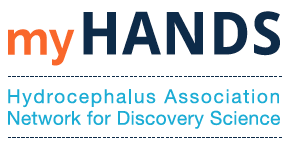Posthemorrhagic hydrocephalus white paper published!
 Outcomes from the 2016 PHH Workshop
Outcomes from the 2016 PHH Workshop
A new white paper identifies important areas for research and intervention to help reduce the occurrence and effects of posthemorrhagic hydrocephalus (PHH), the most prevalent form of pediatric hydrocephalus in the United States. The paper, “Opportunities in posthemorrhagic hydrocephalus research: outcomes of the Hydrocephalus Association Posthemorrhagic Hydrocephalus Workshop” was published in Fluids and Barriers of the CNS.
The paper summarizes recommendations from the Hydrocephalus Association Posthemorrhagic Hydrocephalus Workshop, held July 25-26, 2016, at the National Institutes of Health, Neuroscience Center. The workshop brought together a wide range of researchers, including pediatric neurosurgeons, neurologists, neuropsychologists, and other key scientists. Members of the hydrocephalus community, such as family members of people affected by the condition, also participated in the workshop.
“The goals of the workshop were to identify areas of opportunity in posthemorrhagic hydrocephalus research and encourage scientific collaboration across a diverse set of fields. The white paper details the current knowledge base around PHH and offers key research targets for this complex condition,” explained Dr. Jenna Koschnitzky, the Hydrocephalus Association’s National Director of Research Programs.
Hydrocephalus is an abnormal accumulation of cerebrospinal fluid (CSF) within the cavities of the brain called ventricles. As the CSF builds up, it causes the ventricles to enlarge and the pressure inside the head to increase. PHH develops after a brain bleed and most often occurs in premature infants. It is a common and particularly insidious form of hydrocephalus, accounting for 25 percent of all pediatric hydrocephalus cases. To prevent PHH and the improve long-term outcomes, workshop participants recommended the following areas for future research:
Early Identification: It remains unclear why some children develop PHH after a brain bleed and others do not. Early identification of high risk infants could be an essential component in the development and testing of new therapies. Biomarkers that predict the development of PHH could lead to earlier intervention and improved outcomes.
Preventing Brain Bleeds: The blood vessels in the brain of premature infants are not yet fully developed, making them particularly susceptible to rupture. By protecting or strengthening these blood vessels, scientists could prevent brain bleeds in this vulnerable population.
Stopping Brain Damage: As a result of a brain bleed, blood damages the brain through a variety of mechanisms. Discovering and stopping these blood-derived factors could stop the damage and prevent the development of PHH.
Reestablish CSF Flow: After a brain bleed, it is believed that clots of blood and scar tissue block the flow of cerebrospinal fluid (CSF) through the brain. As the fluid builds up, pressure in the brain increases and causes hydrocephalus. Finding new ways to reestablish CSF flow could prevent PHH and reduce injury due to high brain pressure.
Repairing Brain Damage: PHH can damage the brain and also alter brain development. For example, infants with PHH are likely to suffer from intellectual disabilities and the co-occurrence of epilepsy and cerebral palsy. Finding strategies to repair the brain will improve long-term outcomes for those affected by the condition.
Workshop participants also discussed the importance of identifying the best care practices and treatment approaches for infants with PHH as well as the importance of conducting well designed clinical trials. Optimizing current clinical care across all hospitals will ensure that every infant has the best possible outcome while conducting high quality clinical trials will ensure that new scientific advances quickly become standard clinical practice.
The workshop was developed through the Hydrocephalus Association’s Pipeline to a Cure Initiative, a three-year initiative to increase research efforts focused on PHH.
About the Hydrocephalus Association
Founded in 1983 by parents of children with hydrocephalus, the Hydrocephalus Association has grown to be the nation’s largest and most widely respected organization dedicated to hydrocephalus. The Hydrocephalus Association began funding research in 2009. Since then, HA has committed over $7 million to research, making it the largest nonprofit, non-governmental funder of hydrocephalus research in the U.S. For more information, visit the Hydrocephalus Association website at http://www.hydroassoc.org or call (888) 598-3789.

